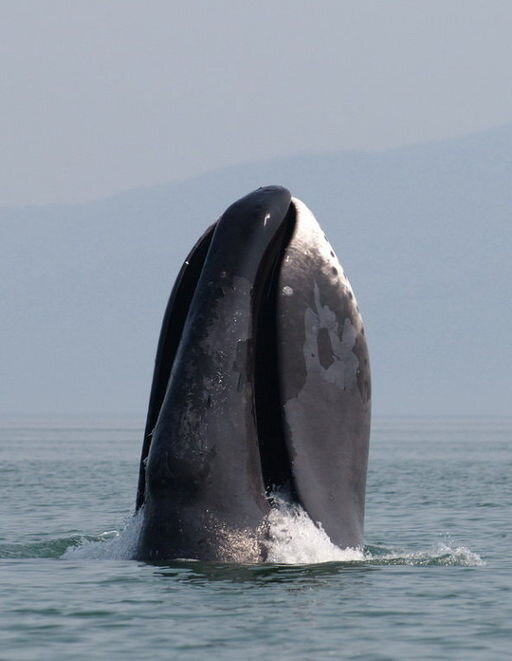Food-Health Issues among Alaska Natives
For more detailed information on the issues around food and health of Native Americans, please see our companion article entitled
“The Food-Health Nexus of First Nation Native Americans on Reservations.”
Photo Credit © Olga Shpak on Wikimedia Commons; (see license); no changes were made
Working from 2010 census numbers, 2.9 million people identified as American Indian or Alaska Native, equivalent to 0.9 percent of the total US population. [FN1] People who identified as American Indian or Alaskan Native in combination with another race, represent 1.7 percent of the US population, or 5.2 million people. [FN2] For the annual estimation of 2019, the gender ratio was around 50/50 for both profiles. [FN3] A 2019 estimation suggests that Native Hawaiian Pacific Islanders account for only 1.3% of the total population but make up the majority of the sparse population living in Western and Northern Alaska, as well as in certain regions of Southeast Alaska. [FN4]
What a Difference a Century Makes
In 1851, the US Congress passed the Indian Appropriations Act (IAA) and after much violence and bloodshed, funded the reservations systems for Native Americans which cut many people away from their traditional homelands, foods and hunting grounds. 108 years later, Alaska became a part of the United States with a majority population of indigenous First Nations people. There were a few false starts, but negotiations led to something workable for both parties. The most striking difference from the IAA was the acknowledgment in Alaska that the tribes themselves should have the right to choose their land, based on the high importance of traditional subsistence hunting and other food sources. It also helped that the First Nations were given three years to make their choices. A second very important difference was the central concept of economic development for the First Nations in particular and for Alaska as a whole. The Alaska Native Claims Settlement Act signed by Richard Nixon and the Alaskan Federation of Natives in December 18, 1971 settled most land claims involving 44 million acres (180,000 km2) and distributed US$963 million. The land and funds were divided among regional, urban, and village tribal corporations established under the law, all in the name of economic development. [FN5] The Act set up a system of village and regional native corporations to manage the lands and cash payments and clarified how the corporations should operate. [FN6]
Health and Dietary Change
Compulsory settlement, economic migration or voluntary relocation to contexts offering better education and employment infrastructure have changed diets and markedly lowered levels of physical activity among both American Indians and Alaska Natives. These changes lead to the last commonality: shortened average life spans. According to Indian Health Service factsheets on disparities, American Indians and Alaska Natives born today have a life expectancy of 73 years and 78.5 years, respectively, for an average of 5.5 years shorter than the U.S. all-races population. [FN7]
In 1998, the last comprehensive age-adjusted report on diabetes (based on Indian Health Service cases in the same patient care management registry) laid out Alaska Natives’ prevalence. [FN8] The conclusions were that three concurrent changes had occurred in the preceding decades. There had been increased proportions of carbohydrates in the diet, there was an increasing prevalence of obesity, and increasing prevalence of diabetes. They further noted that:
1. There is evidence that elements of the traditional diet, specifically frequent seal oil and salmon intake, correlate with a lesser risk of glucose intolerance.
2. There is also evidence that physical activity may be protective among Alaska Natives, as it is in other populations.
3. Those involved in health care and research among northern peoples should search for ways to form partnerships that will assist populations in their own quest for better health.
Poverty Today in Alaska
State poverty statistics for Alaska cover the whole population estimated at 724,357 in 2021, and they don’t filter for particular ethnic groups or “races”. [FN9] As of early 2021, the state recognized the presence of “extreme poverty” among 6% of the population; 2.6% of households were unbanked, there was a senior poverty rate of 7.4%, almost 13% of individuals have no insurance, and there is a large group of single-parent families, 23% of whose children are living below the poverty line. [FN10]
In terms of numbers of people applying for Federal Aid, the most significant applications in 2021 are for enrollment in Medicaid and CHIP for children (96,953); Earned Income Tax Credit (EITC) recipients (45,000); children receiving food stamps (35,519) (SNAP), women and children receiving (WIC) or the Women, Children and Infants Supplemental Nutrition Program (17,902). [FN11]
Responses to Food Insecurity
Alaska’s Supplemental Nutrition Assistance Program (SNAP) provides food benefits to all low-income households in the state, subject to beneficiaries being US citizens with social security numbers, and certain specific rules that apply to rural areas of Alaska.
The federal government funds 100% of the SNAP benefits and the state pays 50% of operational costs. The Division of Public Assistance issues SNAP benefits via the Alaska Quest card and is also gradually rolling out the new Pandemic Electronic Benefit Transfer (P-EBT) which is part of the U.S. government response to the COVID-19 pandemic. P-EBT focusses on emergency nutrition benefits for the schoolchildren who previously received free or reduced-price meals under the National School Lunch Act. Alaska has special rules that allow for higher SNAP benefits in rural areas, and the use of benefits to purchase certain hunting and fishing subsistence supplies. [FN12]
In terms of eligibility, the amount a household can receive each month depends on the household's “countable” income and size of the household. Eligible households use SNAP benefits to buy food products from authorized stores statewide. Eligible applicants must pass income and assets tests. The gross annual income test is based on 130% of the current Alaska poverty standard. [FN13] Along with Hawaii, Alaska is assessed with different poverty standards than the 48 contiguous states and D.C. The 2021 poverty standards for Alaska were released in January 2021: a household of three people in Alaska is considered as being at the federal poverty level if their combined annual income is $27,450 or less. This represents 100%, whereas the guideline for SNAP eligibility is 130%, or $35,685. [FN14] Guidance to healthier eating is implicit in the list of foods which can be paid for using SNAP benefits, but the jury is still out concerning effectiveness. [FN15]
Resources and Notes
1. Due to Covid-19 pandemic and concerns around the budget of the 2020 Decennial Census, compilation of data from self-responding questionnaires had not been finalized at the time of writing.
2. See U.S. Census Bureau. (2012, January). C2010BR-10: 2010 Census Briefs: The American Indian and Alaska Native Population: 2010.
3. Annual Estimates of the Resident Population by Sex, Race, and Hispanic Origin for the United States: April 1, 2010 to July 1, 2019 (NC-EST2019-SR11H), (see American Indian and Alaska Native) Excel Spreadsheet. See https://www.census.gov/newsroom/press-kits/2020/population-estimates-detailed.html
4. https://www.census.gov/quickfacts/fact/table/AK/RHI525219#RHI525219
5. "Alaska Native Claims Settlement Act". U.S. Fish and Wildlife Service; see https://www.fws.gov/laws/lawsdigest/alasnat.html
6. Ibid "Alaska Native Claims Settlement Act", etc.
7. See https://www.ihs.gov/newsroom/factsheets/disparities/
8. J. L. Naylor, C. D. Schraer, A. M. Mayer, A. P. Lanier, C. A. Treat & N. J. Murphy (2003) Diabetes among Alaska Natives: a review, International Journal of Circumpolar Health, 62:4, 363-387; p. 364. See also Center for Disease Control and Prevention, National Center for Health Statistics, Division of Health Interview Statistics, 1999 Diabetes Surveillance. Available from http://www.cdc.gov/diabetes/statistics/surv199/chap2/table08.html
9. https://worldpopulationreview.com/states/alaska-population Alaska’s population birthrate has declined between 2015 and 2019.
10. Poverty and Federal Aid statistics are from https://spotlightonpoverty.org/states/alaska/
11. Poverty and Federal Aid statistics are from https://spotlightonpoverty.org/states/alaska/ Other significant programs for low-income Alaskans are Temporary Assistance for Needy Families (TANF), Federal Rental Assistance, Low Income Home Energy Assistance Program and the Head Start Program.
12. http://dhss.alaska.gov/dpa/Pages/default.aspx
13. For Alaskan and other poverty standards for 2021, see https://aspe.hhs.gov/poverty-guidelines
14. For detailed conditions for SNAP eligibility and Alaska state specific options and application forms, see http://dhss.alaska.gov/dpa/Pages/SNAP/default.aspx#benefits
15. Items that can be paid for with SNAP benefits in Alaska are fruits and vegetables, meat, poultry, and fish, dairy products, breads and cereals, other foods such as snack foods and non-alcoholic beverages; as well as seeds and plants capable of produce food for the household.

